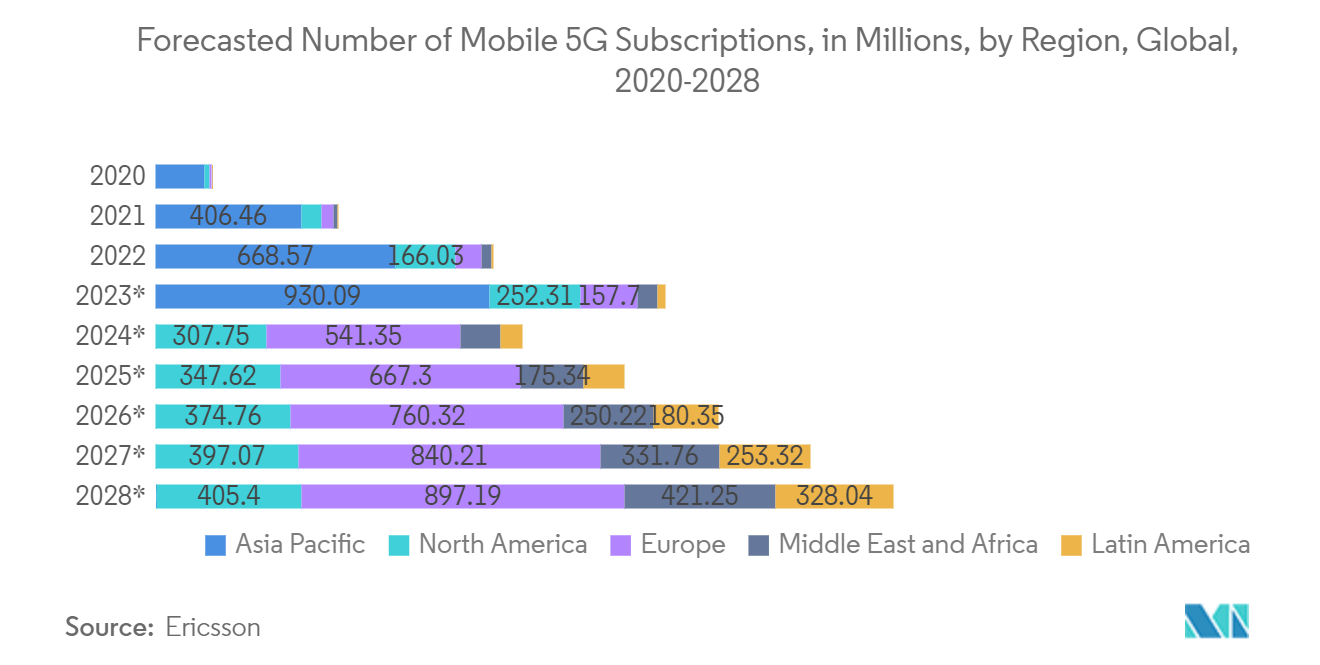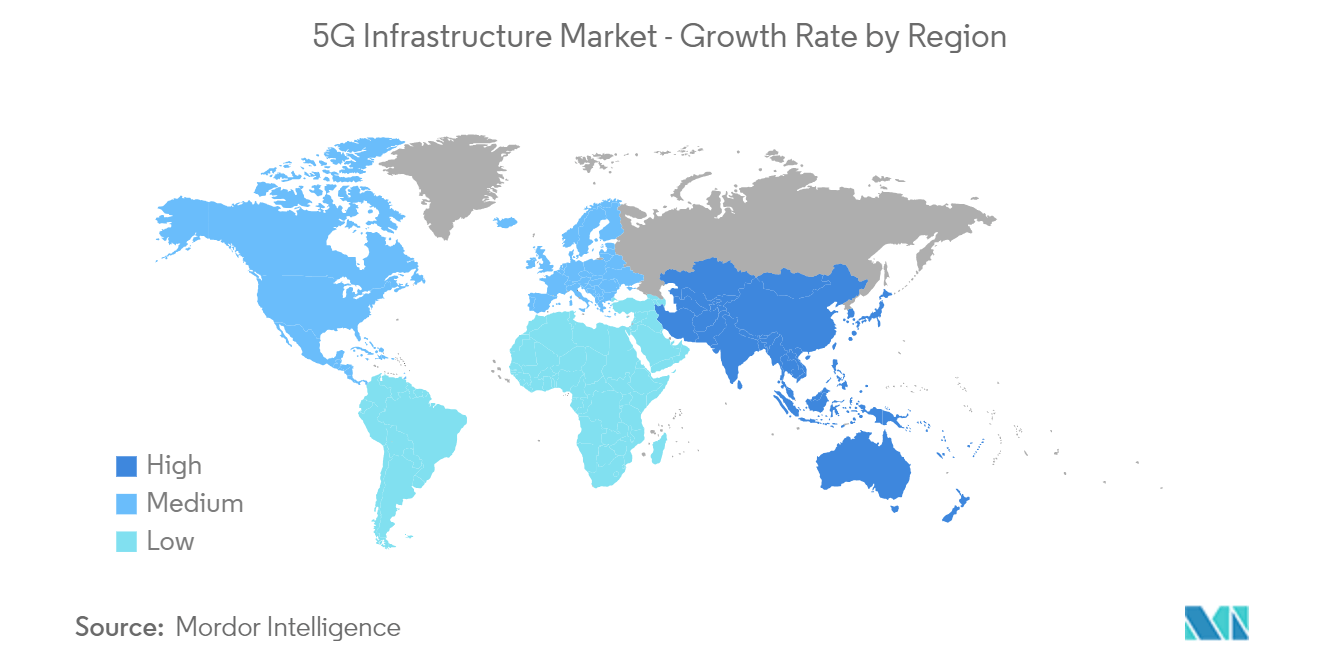Market Trends of 5G Infrastructure Industry
5G Radio Access Networks Expected to Hold Major Market Share
- RAN provides radio access network resources across wireless devices. Silicon chips in the core network, as well as the user equipment, enable the functionality of the RAN. A radio access network (RAN) encompasses base stations, antennas, macro cells, and small cells. 5G can be deployed in two ways, through a 5G core network or connecting a 5G RAN to a 4G network.
- The migration to 5G has become a critical factor, as it will enable higher bandwidths, and lower latencies, to name a few. RAN disaggregation enabled by cloud RANs and open interfaces allows carriers to benefit from a wider ecosystem.
- According to Ericsson, 5G subscriptions are expected to increase globally between 2022 and 2023, rising from over 0.55 billion to over 1.67 billion. Further, according to GSMA, the usage of 5G in GCC states will be slightly higher (16% customer 5G adoption) than the global average (15%) by 2025, mainly driven by governments and mobile operators with the support of mobile technology partners. Moreover, the number of 5G subscriptions is expected to reach 129.62 million in the Middle East and North African regions. Such a huge rise in 5G subscriptions would drive the market.
- Therefore, major leading carriers request information (RFIs) for RAN disaggregation and open solutions. This is because they can have the flexibility to choose the best solutions for the different parts of the RAN. For instance, edge servers for virtualized baseband units (BBUs) can also be used to run applications within the edge cloud and RAN to reduce latency. The amalgamation of 5G NR with a virtualized RAN architecture is expected to open up new opportunities for low latency and IoT services.
- The growing partnerships in developed and developing economies in Asia-Pacific are analyzed to bolster the market's growth rate. For instance, in December 2022, in support of the NTT DOCOMO Open Radio Access Network Open RAN expansion plans, SAMSUNG Electronics announced it would provide a range of 5G radios. In addition to its current 3.4GHz radio support in DoCoMo, Samsung is adding new radios with a 3.7Ghz, 4.5Ghz, and 28Ghz frequency range. The radios support NTT DoCoMo's open Radio Access Network (O-RAN) expansion and cover all of the Time Division Duplex (TDD) spectrum bands held by the operator. As Samsung expands its coverage in Japan, the ability of NTT DOCOMO to take advantage of its spectrum holdings will allow it to build a diverse 5G network and offer enhanced services for consumers and enterprises throughout Japan. In the commercial network environment of NTT DOCOMO, they have also carried out interoperability tests on these new radios with basebands from various suppliers.

Asia Pacific Expected to Dominate the Market
- The Asia-Pacific region is witnessing growing investment in 5G infrastructure. China is one of the largest investors in 5G technology, even leaving behind the United States; hence, one of the significant markets for 5G infrastructure vendors too. The growing effort by the Chinese government, telecom operators, and vendors to deploy 5G as quickly as possible is bringing more investment into the market studied. The country also has some of the largest telecom 5G infrastructure providers, like Huawei. However, the US-China trade war has weakened the exports of some electronic segments in the last two years.
- According to the GSMA, by 2025, 40-50% of China's mobile users may be using 5G. The country is gaining more in terms of network convergence, network virtualization, and network slicing. The government also started to include standalone as part of its initial 5G deployment, owing to building a 5G network from the ground rather than evolving a 4G network into a 5G. This would enable the growth of the studied market in the region.
- The establishment of 5G is a high priority for the Japanese government. The Ministry of Internal Affairs and Communications (MIC) is the lead agency on 5G. Four companies submitted plans to MIC for the development of 5G networks. All four plans were approved based on certain conditions, including focusing on the needs of both urban and rural areas; maintaining appropriate and sufficient optical fibers to provide 5G service; and taking adequate cybersecurity measures, including measures against supply chain risks.
- According to the Ministry of Science and ICT (South Korea), As of March 2023, South Korea had approximately 29.6 million 5G subscribers. Such a huge number of 5G subscribers would drive the demand for the studied market and enable the market players to develop new solutions to cater to a wide range of needs of customers and capture the market share.
- The countries that are considered in the rest of Asia-Pacific are Vietnam, Thailand, and Indonesia, among others. The developments happening in the market, the rise in the initiatives towards smart cities, and the development of new technologies are expected to drive the demand for the studied market in the rest of the Asia-Pacific region.

